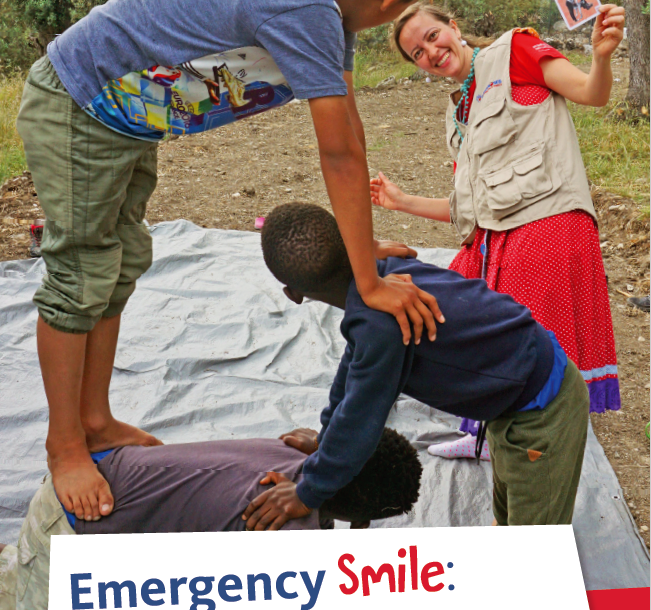
Clown interventions in refugee settlements in Greece: Evaluation Report 2018- 2019
In 2018-2019 RED NOSES International carried out 6 missions in Greece in the context of the Emergency Smile programme.
In 2019, around 25,443 children arrived in Greece by land and sea, including 3,852 (15%) unaccompanied asylum-seeking children (UASC)*. This brought the total number of children present in country to 42,500 children, according to UNICEF**. Out of the 4,815 unaccompanied children present in Greece, more than half (2,781) remained outside appropriate accommodation, including 1,045 UASC living in informal/insecure settlements, where conditions are dire and even the basic essentials are scarce. Human rights for these children are often denied or violated making the situation in the Greek hotspots a “human rights disaster”. This puts children not only in a situation of danger, but also under a lot of physical, emotional and psychological distress.
Emergency Smile is our programme for crisis situations, where clowns support children and their families to develop strategies to cope with their challenging situation. The programme includes different formats for children (the Circus Smile workshop, clown parades, clown shows, and support during invasive medical procedures) and one format for aid workers, the Humour Relief Workshop.
The report “Emergency Smile: Clown interventions in refugee settlements” analyses the work of RED NOSES International during our missions in Greece, measuring the impact of the programme and providing recommendations for future missions. Some of the key learnings include that the RED NOSES clowns create more happiness for children in crisis and for aid workers, as well as for some adults in crisis. Emergency Smile also seems to make the job easier for those aid workers who participated in a Humour Relief Workshop.
The data used in the report is taken from RED NOSES reports, interviews with children who received an Intensive Smile intervention and a Circus Smile workshop, as well as interviews, surveys, and a focus group discussion with aid workers who witnessed their work.
Sources:
* UNHCR, UNICEF and IOM, 2019. Refugee and Migrant Children in Europe: Accompanied, Unaccompanied and Separated. Overview of Trends January to December 2019. Available at: https://data2.unhcr.org/en/documents/download/77274 (last accessed 15 July 2020).
** UNICEF, Latest statistics and graphics on refugee and migrant children: latest information on children arriving in Europe. Available at: https://www.unicef.org/eca/emergencies/latest-statistics-and-graphics-refugee-and-migrant-children (last accessed 15 July 2020).

